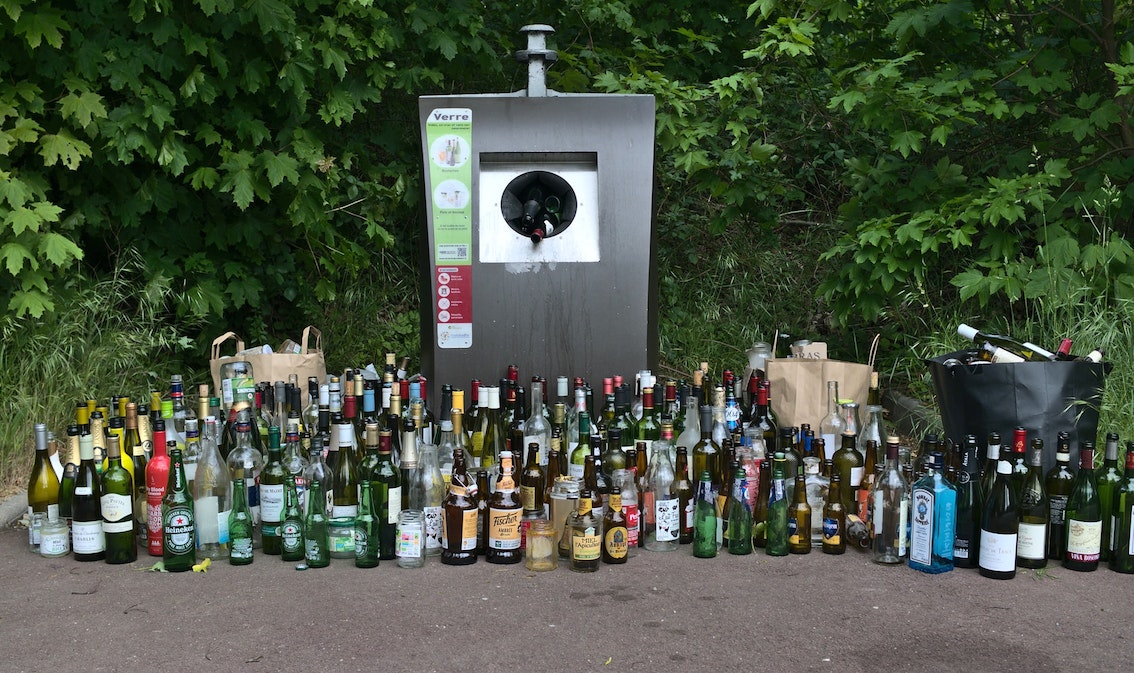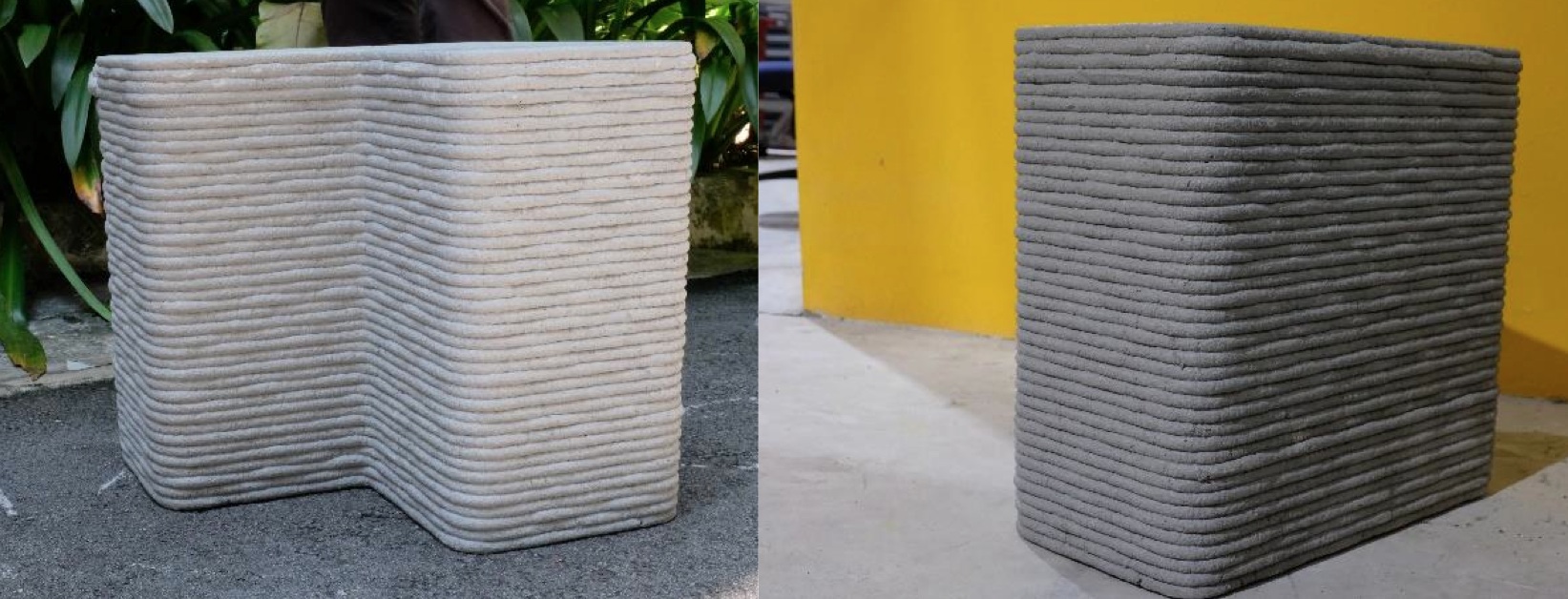
Researchers from Nanyang Technological University, Singapore (NTU Singapore) have discovered how to use recycled glass in 3D printing instead of sand, opening the door to more sustainable concrete structures.
They used a mix of recycled glass, commercial cement products, water, and additives to print a 40cm-tall concrete bench, which passed compression and strength tests and showed “excellent” buildability and extrudability.
They say it’s the first successful printing of a structure using glass-based concrete.
Glass can be 100% recycled with no reduction in quality, but it’s one of the least recycled waste types in Singapore.
Just 13% of the 74,000 tonnes of glass waste generated there last year was recycled, according to the National Environment Agency of Singapore. Most glass waste is incinerated before being dumped in landfills.
At the same time, the world is facing a shortage of sand owing to rapid urbanisation, with climate scientists calling it one of the greatest sustainability challenges of the 21st century, causing pollution, flooding and the erosion of marine habitats.
- See the glass-concrete bench being printed:
“The main challenge in formulating 3D-printable concrete mixtures is to figure out just how much of each component to add to obtain a structurally sound structure with minimal defects,” said principal investigator Professor Tan Ming Jen. “Our team has come up with a feasible formula, demonstrating for the first time that glass can indeed be used to 3D-print a bench with excellent structural integrity.”
“The research also exemplifies the concept of a circular economy,” he added, noting that 70% of glass is made up of silicon dioxide, or silica, which comes from sand.
“What our research does is to essentially return the silica found in glass to be reused again as sand in our 3D printing concrete mixture.”
Tan led a project to print a bathroom pod in 12 hours in 2019, which he said was around half the time required for conventional construction of the same structure.

Fellow researcher Andrew Ting said: “Given that sand is being exploited at a rate much quicker than it can be replenished naturally, the prospect of using recycled glass in building and construction is becoming more attractive. We believe our development has great potential to relieve the demand on sand for this sector in the future.”
The researchers noted that because glass is naturally hydrophobic – meaning it does not absorb water – less water is required to create a concrete mix suitable for 3D printing use.
The experiment used recycled glass crushed to different particle sizes from medium to super-fine. To enable printing, the team adjusted the control systems of the 3D printer to match the flow rate of the nozzle to the hardening properties of the concrete.
The printing was carried out in a single session using a 4-axis gantry robotic printer which has a print volume of 1.2 metre x 1.2 metre x 1 metre.
In collaboration with Singapore start-up company Soda Lemon, the researchers will look at printing bigger structures with the glass concrete.
Their paper was published in Journal of Building Engineering on 1 February 2022.
Further reading:






